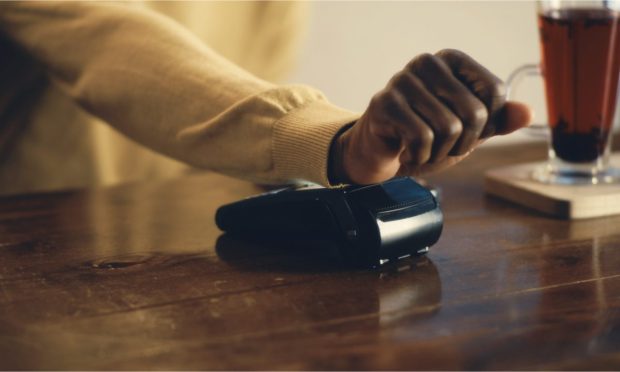Implanted Payments Tech Turns People Into Walking, Talking Bio-Wallets

Taking the notion of “industrial piercing” to another level entirely, payments innovators want to get under your skin — yes, literally — with a microchip that handles the bill with a gesture.
No, not the gesture some of you are probably imagining at this moment.
Giving new and potentially gruesome meaning to common phrases like “I lost my wallet,” it’s really a step toward the next-next normal when we’ll part ways with devices altogether, approaching a future singularity when we cause transactions to occur by sheer will.
Teenagers would argue this is already working fine without technical assistance. It’s called “incessant whining” — a powerful force that venture firms want someone to productize ASAP.
For now, it’s about implants. The BBC reported in April on a fellow walking around London getting things with a wave of his hand, and that hand was clutching neither wand nor gun. Rather, it’s been equipped with a microchip made by FinTech Walletmor that’s implanted under the skin and, when synced with an eWallet app, can handle an actual payment.
Weighing under a gram and about the size of a grain of rice, the chip needs no power source, relying on near-field communications (NFC), the Purewrist wearable and the iCard digital wallet.
Before anyone gets worked up, ask yourself this: “Does my pet have a RFID chip?” If the answer is yes, then you’re already using a variation of this tech.
If your pet doesn’t have a chip, consider getting one, lest you end up missing one valuable pet.
Besides, we’ve been toying with this idea for years, although not in subdermal form factors.
Bio Means Business
Amazon One, introduced in 2020 and known colloquially as “palm pay” is a biometric scan that recognizes your palm print and lets you pay by passing your hand over an optical point-of-sale (POS) terminal.
On Wednesday (April 20) it was widely reported that Amazon One is being added to retail locations in Austin, Texas, bringing total U.S. stores with “palm pay” into the 100 range.
If it scales, Amazon is the company to make it happen. Still a big “if” though.
Biometrics are getting put through their legal paces with governments worldwide asking questions about all that identity data and how it might be misused or abused.
Maybe ask Elon Musk, the guy who founded the company PayPal is founded on, as well as some other well-known ventures (Tesla, SpaceX), and could soon possibly own Twitter.
A few years back, Musk sank $100 million into a startup called Neuralink.
According to the Neuralink site, it’s designing “the first neural implant that will let you control a computer or mobile device anywhere you go. Micron-scale threads are inserted into areas of the brain that control movement. Each thread contains many electrodes and connects them to an implant, the Link.”
We’ve heard rumors of engineers working out bugs and glitches, like people simply scrolling past social media ads for luxury SUVs — and waking up to find one in their driveway, delivered.
They’ll figure it out. It’s Elon.
You-as-a-Payment (YaaP)
Anyway, Musk is hardly alone in his quest for mind control over devices, vehicles and money. While we’re at it, not everyone cares for the terminology springing up around the idea.
Biometrics innovators have been hammering away at this for years, like the Big Tech folks behind that thumbprint scan and facial recognition on your phone. They like precise language.
In March, PopID CEO John Miller told PYMNTS, “We don’t use the [term] ‘facial recognition’ to describe our platform. We use ‘face verification.’ Recognition refers to technologies that are actively surveying people, watching people. Our technology requires you to first enroll in the platform. You opt in on your phone and say, ‘I want to have the ability to pay with my face.’”
This is effectively the digital transformation of what very attractive people have been doing for millennia — pay by face. They’re so stunning that just looking at them is its own reward. There are ways to monetize this effect, but that’s another story for another time.
Which brings us back to London’s chip man. In fact, Walletmor says it’s sold about 500 of the implants, so you could be standing next to one of these eWallet cyborgs without knowing it.
Incidentally, Walletmor’s site says, “inserting an implant takes as short as 15 minutes, and the procedure itself is minimally invasive and painless — it requires a minimal incision with the use of a local anesthetic.”
You can even have a body piercer do it. In fact, the more you learn, the cooler it sounds.
“The implant can be used to pay for a drink on the beach in Rio, a coffee in New York, a haircut in Paris — or at your local grocery store,” Walletmor CEO Wojtek Paprota told the BBC. “It can be used wherever contactless payments are accepted.”
That’s more like it. Where do we sign? Seems like we should just be able to nod, but whatever.
